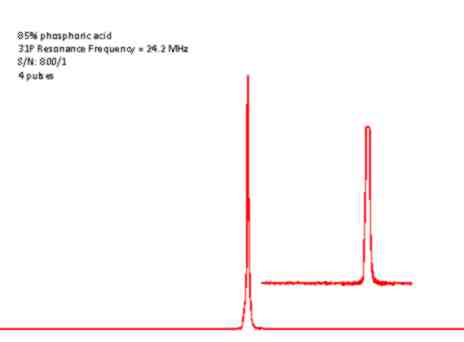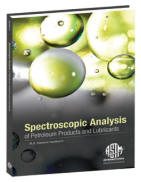The data analysis capabilities of the MestReNova NMR software makes processing and analyzing complex reaction mixture data a snap! Stacked plots are quick and easy and the integration routines rapidly process the peak areas into reaction profiles. Further steps allow the exponential fitting of the reaction profiles to yield kinetic information. Here are a few examples of the data visualization and rapid reaction profiling on a 60 MHz 1H NMR series obtained every 10 seconds (1 pulse) over the course of 25 minutes – the reaction is the esterification of tert-butanol with acetic anhydride in the presence of acid.

Figure 1: Stacked Plot of the Aliphatic Region of the Spectrum with Reaction Chemistry Protons Identified

Figure 2: Stacked Plot – Full Spectrum – Reaction Monitoring – 146 Spectra – 10 Seconds Apart

Figure 3: Angled Stack Plot – Acetic Anhydride and tert-Butanol – Real Time Reaction Monitoring by 1H NMR at 60 MHz

Figure 4: Stacked and Whitewashed Plot of 1H NMR data at 60 MHz – Real Time Reaction Monitoring of Acetic Anhydride with tert-Butanol

Figure 5: Data Analysis Tool and production of reaction profiles.
The MNova data analysis tools allow the user to integrate NMR reaction peaks and automatically plots and fits them to exponential time constants allowing detailed kinetics to be extracted rapidly and easily from the data. What used to take hours of lining up ascii spectra in excel or other software now literally takes seconds. The integration is segmented in such a manner that integrals can be made to track with shifting resonances, for example labile protons effected by pH.
The AspectItalia 60 MHz NMR system allows real time analysis of reactions with high S/N on single pulses. half height linewidths of 1-2 Hz (15-30 ppb) are possible on static reaction setups and 2-5 Hz (30 – 80 ppb) are possible with flowing reactions at rates of 1-20 ml/min.
The MNova software is becoming a standard NMR processing platform with many users worldwide. Fully functioning demos can be downloaded from the MestReLab research site at: http://mestrelab.com/software/mnova-nmr/
For further details contact John Edwards










